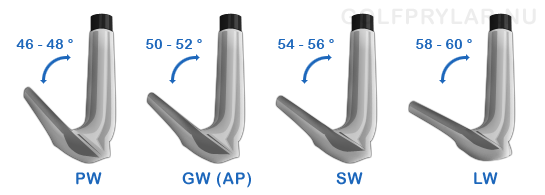
This is an extra wedge that, in loft terms, fits between the pitching wedge and the sand wedge.Įvery brand has their own way of describing different wedges so many of you many know this clubs as a gap or middle wedge instead. So that none of you have to go through the ordeal I did, this article will explain more about the approach wedge. I now had to get it out on the range and the course to figure out where and when to use it. The Approach Wedge can fill in any distance gaps in your bag where it counts, around the green. It turned out it was my new approach wedge, a club that I had always referred to as a gap wedge.Īn Approach or Gap Wedge sits inbetween the Pitching Wedge and The Sand Wedge in terms of loft, lenght, lie, distance and flight trajectory. I got my new set of TaylorMade P760 irons last season and the first thing I had to do was Google what my new “A” wedge was. This will allow you to cover a range of distances and shot types ranging from spinning wedge shots to simple chips as you approach the green.What’s An Approach Wedge – Vs. When organizing your golf bag, a key aim is to ensure that you carry a mixture of wedges and that each wedge has a loft with an even degree split between them when you complete your golf club selection. This is because with a dialed-in wedge game you can hit your shots around the green closer to the pin. It can be a key component of being either a high handicapper, mid handicapper, or low handicapper. Knowing your wedges is imperative for short game success.

The number that you see will refer to the angle of loft and in turn answer which type of wedge you are using. The loft can typically be located on the underside of the club. Knowing your wedge distances, you can ensure that you split the degree lofts evenly between a pitching wedge, gap wedge (approach wedge), sand wedge, and lob wedge.
#PITCHING WEDGE DEGREE PROFESSIONAL#
For example, a professional can hit a pitching wedge as far as 140 yards, whereas an amateur might only hit the same pitching wedge around 100 – 110 yards. These vary for both amateurs and professionals due to different clubhead speeds. Within 100 yards of the pin, you can find many use cases using a wedge that ranges from approach shots to chip, pitch, and even bunker shots ( GolfMagic).Įach wedge has a different potential maximum distance. When golfers understand how loft determines a club’s performance on the course, they can choose the club to suit their situation the best. The loft of each wedge differs, measured in degrees, depending on the manufacturer.

This is because low loft clubs will cause the ball to travel further, but a higher lofted club will land softer. They are typically used when approaching the green on a golf course. In golf, wedges are clubs with a high loft that golfers can use to hit the ball high into the air and land the ball quickly. An example of this would be knowing when to hit a chip shot or pitch shot.

Golfers who understand the differences between the clubs will be better able to make better decisions.

Making good decisions and lowering scores requires understanding the differences between wedges. There are various wedges that golfers can use, including pitching wedges, sand wedges, gap wedges, and lob wedges.


 0 kommentar(er)
0 kommentar(er)
